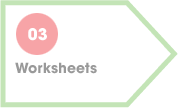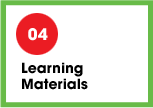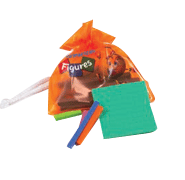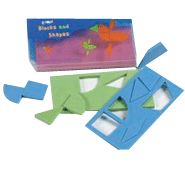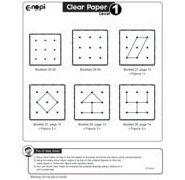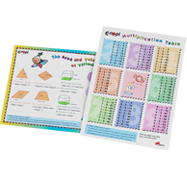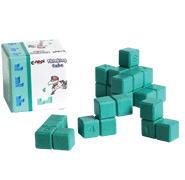Learning materials
Eye Level Math helps improve problems-solving skills by enabling them to master concepts through a small step approach.
Students experience practical applications in mathematics by solving applied
mathematical problems using Eye Level Math Learning Materials.
-
Numerical Figures
Numerical Figures assist in developing the concepts of number and quantity.
-
Blocks and Shapes
Blocks and Shapes assist in developing depth perception by matching and finding the location of various shapes.
-
Clear Paper
Clear Paper is used to trace and copy various shapes. This helps students to develop their mental skills in relation to depth perception and location.
-
Colored Blocks
Colored Blocks assist in the understanding of numbers as well as length. As students manipulate Colored Blocks, they develop their perception of depth and location.
-
Mirror
Mirror activities require students to draw shapes symmetrically. This forms the basis for line symmetry that will be introduced in future studies.
-
Wooden Blocks
The manipulation of Wooden Blocks enables students to learn depth perception, location, and spatial relationships. This is crucial in the development of critical and analytical thinking skills.
-
Thinking Bricks
Thinking Bricks consist of three cuboids that can be used to stack up the bricks. (5 pieces, 2 sets)
-
Thinking Pentos
Thinking Pentos are used to build a model built by putting the sides of unit squares together. (12 pieces)
-
Thinking Cubes
Thinking Cubes are used to build a model that comprises the figures with concave surface built by putting together the faces of 3 or 4 cubes. (7 pieces)
Eye Level Math Materials
| Levels 1-23 | Numerical Figures, Blocks and Shapes, Clear Paper, Colored Blocks, Mirror, and Wooden Blocks |
|---|---|
| Levels 24-32 | Thinking Bricks, Thinking Pentos, and Thinking Cubes |








